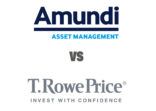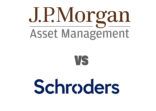While providers of smart-beta exchange traded funds (ETFs) offer emerging market value-focused products, Secker believes an automated, index-based approach is not the best way to invest in emerging markets.
“You’ve got to be pragmatic on how you assess [value], because there’s a fine line between a value stock and a value trap in emerging markets,” he told FSA.
Automated analysis of some emerging market stocks, he argues, does not always go deep enough.
He focused on the example of state-owned enterprises, arguing that “the management teams aren’t there to generate profitability.
“A lot of companies in China are owned and controlled by the government, which wants those businesses to generate employment, to manifest social stability rather than to generate profits to pay dividends for shares to appreciate,” he said.
Chinese equities over the last 20 years delivered on average a 5% annual return, as measured by the Shanghai Composite Index. The figure is slightly lower than the 5.2% average annual return of the Dow Jones Industrial Average.
During that time, China’s GDP measured in US dollars grew at the average nominal pace of 13.7%.
“The Chinese economy has completely transformed during that time,” said Secker. “Yet the growth hasn’t translated into profits or generated cash flows. You haven’t seen cash flows turned into dividends.”
‘Change companies’
Secker is a member of the six-person investment team that manages two funds: the M&G Global Emerging Markets Fund and the M&G Asian Fund. Led since their inception by Matthew Vaight, the funds have the same value bias.
Each fund holds around 60 names with a low annual turnover of around 20%, or one new name a month on average. Half of each portfolio is allocated to companies with a low return on capital (ROC), but which the team believes have a change taking place that is likely to result in earnings growth.
The other half are high-ROC companies that provide most of the funds’ current returns.
The “change companies” are typically cheap, because “a lot of emerging market investors don’t look for companies that are going through a period of change,” said Secker.
“The past five or six years have been about buying companies with visible earnings streams, perhaps on the perception that they are defensive companies.”
Companies undergoing restructuring, divesting assets, spinning off businesses, or in other ways working on improving their profitability haven’t been in demand, so they can be bought at low valuations, he said.
Style shift risk
The value investing style has underperformed the growth style in all but two calendar years since the inception of the M&G Global Emerging Markets Fund in 2009. The fund outperformed the MSCI Emerging Markets Index, as measured in US dollars, in 2010, 2012, 2013 and 2016.
The M&G Asian Fund, launched in 2001, outperformed the MSCI Asia-Pacific ex-Japan Index in five out of last ten calendar years.
“The second half of 2014 was a painful one for the [emerging markets] fund,” said Secker. (That year, the fund lost 22% between September and December, in US dollars, according to FE data).
He attributed it to a broad market shift in EM investment style. It was driven by concern about higher interest rates in the US and a pivot away from emerging markets, the collapse in oil prices which hurt the fund’s Russia holdings, and issues with specific stock holdings.
“Value tends to work in emerging markets when fundamentals are improving, earnings are getting better and the macro environment is improving,” Secker said.
Growth stocks tend to outperform when economic growth is flat or worse and investors tend to pay a higher price for companies with visible earnings. A growth style persisted in emerging markets from 2010 to February 2016, he said. Investors sought more defensive areas of the market.
“We think that it has to unwind because the valuations have become very high.”
Yet 2017 has not been good for the value style.
“We’ve been surprised by the strength of the growth style this year, but we fundamentally believe that the value approach works in emerging markets in the long term and there has to be a rotation out of those growth names.”
Performance of M&G Global Emerging Markets Fund and M&G Asian Fund vs indices and sectors

















